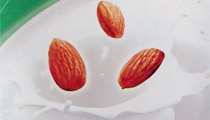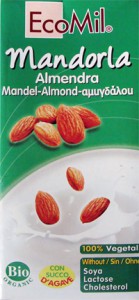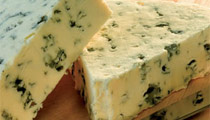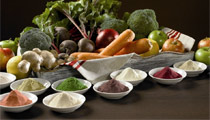 Soya milk continues to dominate the growing dairy-free market in most countries of the world. However, there are signs that newer alternatives are emerging into the mainstream grocery sector, based on ingredients such as rice, oats and, more recently, almonds.
Soya milk continues to dominate the growing dairy-free market in most countries of the world. However, there are signs that newer alternatives are emerging into the mainstream grocery sector, based on ingredients such as rice, oats and, more recently, almonds.
Launches of dairy alternative drinks recorded on the Innova Database reached over 600 in 2010, with almond milks and milk blends accounting for over 8 per cent.
While the number of dairy alternative drinks launched was at a similar level to that in 2009, the share of almond lines was up from 6 per cent, which in itself was double the 3 per cent penetration of almond products five years previously in 2005.
Non-dairy milk alternatives are still a relatively smallmarket overall outside Asia.
Elsewhere, purchase levels are rising with growing awareness of allergy and intolerance issues and the low-fat, low-calorie and cholesterol-free positioning of many of the products.
Within that, soya is facing problems in some developed markets, particularly the US, with regard to health scares. The result in some instances has been a move to non-soya milk alternatives, including those made with ingredients such as rice, hemp, oats and coconut, as well as almonds and other nuts.
The fact is that almond milks have been available in health food stores for many years. However it is their emergence into the mainstream market that has been most notable of late.
The US has led this trend, with nearly one-fifth of the 2010 dairy alternative drink launches recorded on Innova being almond milk or almond milk blends. Sales of almond milk in the US saw double-digit growth in 2010, while sales of soya milk fell by a similar percentage.
Lu Ann Williams, head of research at Innova Market Insights, reports, “Competition in the non-dairy milk sector has been ramped up as two mainstream brands have introduced chilled versions of almond-based products into grocery outlets alongside the original ambient products, previously found primarily in more specialist stores”.
She adds, “The fight for dominance between the two players, both part of major companies, has not only grown their sales but also promoted overall awareness of the product, further encouraging development of smaller brands and retailer own-labels”.
Dean Foods’ White Wave subsidiary launched PureAlmond, sold under its Silk branding, which is more usually associated with soya milk. The California nut co-operative, Blue Diamond Growers, has its AlmondBreeze range, made using its own almonds. Both brands now have a number of flavour variants, particularly vanilla, as well as original and unsweetened options. Hain Celestial’s Almond Dream drink was relaunched in early 2010 in Original and Unsweetened variants. Natural foods specialist, Pacific Foods, which includes nut and grain milks within its varied product range, also relaunched its organic Almond drinks range and now also includes reduced-sugar options.
The growing development of the market in the USA was further illustrated by the arrival of WholeFoods Market’s own-brand almond milk in the summer of 2010.
Meanwhile in Europe, almond milk is still mainly confined to specialist health food stores, although launches recorded on the Innova Database indicate that interest in the mainstream market does appear to be rising.
Over 10% of dairy alternative drinks launched in the region in 2010 were either almond or rice & almond blends.
Multinational brand EcoMil from Nutriops is now available in 15 countries in both powdered and ready-to-drink form.
The market is extending further with almond and rice blends, such as Vitariz Organic Rice Drink with Almond from Alinor in the Netherlands; organic options, such as Isola Bio Delice Riso Mandorla in Italy; retailer own-brand launches, such as Carrefour’s organic almond and rice milk in France; light products, such as Condorelli’s Latte di Mandorla Light in Italy, sweetened with acesulfam-K and sucralose; and fortified products with calcium from EcoMil in a number of countries, including some targeted specifically at the breakfast market. All of these were launched in 2010.
 A Kapiti-made blue cheese and a Mercer Gouda have been crowned the top New Zealand cheeses of 2011.
A Kapiti-made blue cheese and a Mercer Gouda have been crowned the top New Zealand cheeses of 2011.
 Soya milk continues to dominate the growing dairy-free market in most countries of the world. However, there are signs that newer alternatives are emerging into the mainstream grocery sector, based on ingredients such as rice, oats and, more recently, almonds.
Soya milk continues to dominate the growing dairy-free market in most countries of the world. However, there are signs that newer alternatives are emerging into the mainstream grocery sector, based on ingredients such as rice, oats and, more recently, almonds.
 Kraft Foods Australia/New Zealand is launching ‘my first vegemite’ – a specially formulated vegemite spread designed to suit a younger palette, with extra vitamins, added iron and half the sodium.
Kraft Foods Australia/New Zealand is launching ‘my first vegemite’ – a specially formulated vegemite spread designed to suit a younger palette, with extra vitamins, added iron and half the sodium.
 Soaring fruit and vegetable prices and concerns about quality are prompting shoppers to look for alternative ways to get their daily fruit and veggie intake.
Soaring fruit and vegetable prices and concerns about quality are prompting shoppers to look for alternative ways to get their daily fruit and veggie intake.